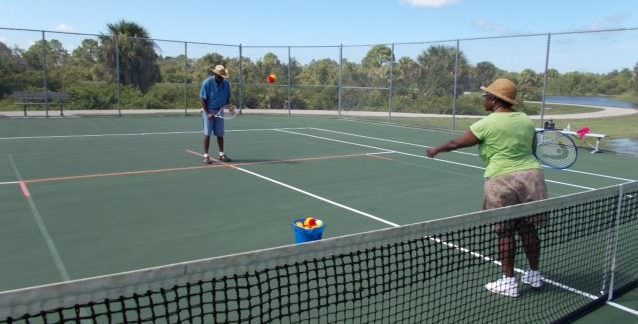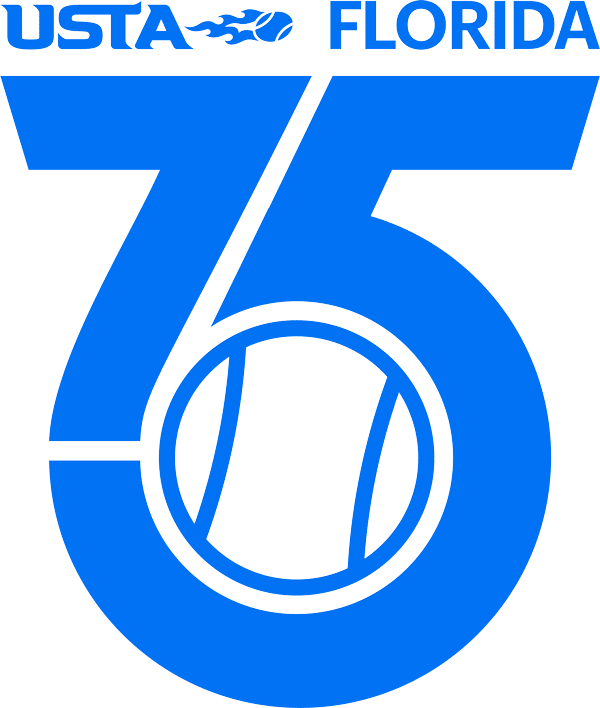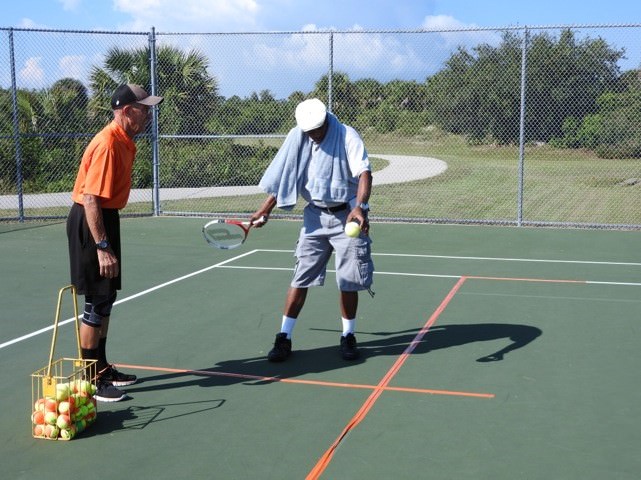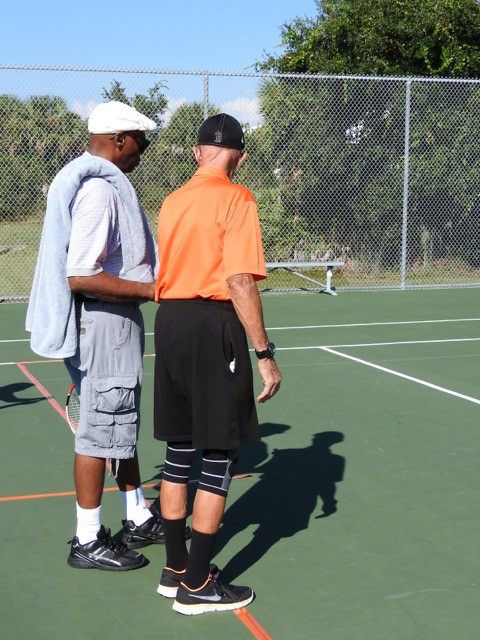November 15th, 2017
Tennis for the Blind Gaining Popularity in Florida’s Rotonda — and Spreading
Ralph Robinson doesn’t look much different from your average tennis enthusiast, with shorts, a jaunty cap and sunglasses. It’s only when he slides his foot forward to feel where the raised court line is that you realize you’re about to witness something difficult to conceive — blind and visually-impaired players rallying and playing tennis.
Art Richards runs his Blind Tennis program out of Rotonda Community Park in Rotonda West, Fla., located just north of Ft. Myers. With grant support over the years from the USTA Florida Section Foundation, the Cultural Guild of the Greater Cape Haze Peninsula, and Charlotte County, Richards work over the last three years has been groundbreaking in a number of ways.
“There’s not a public court built that I know of that can accommodate a blind player and some of the visually impaired,” says Richards, who notes that most blind tennis clinics in the U.S. are played indoors. “I think I’m the only public parks program not only in this state, but in the country, that does it outdoors. When I do my class, I put down the tactile [raised] lines.
“I do it because these people are taxpayers but have no access to recreation on a public tennis court, or to play tennis with their families.”
A free program on Saturday mornings provides players and families an introduction to blind tennis. It also allows him to showcase his other offerings, including 36-foot and 60-foot-court tennis for youth, and the 60-foot Masters Tennis format for older players.
For his blind tennis clinics he uses the original Japanese Sound Ball, the hard-foam official competition ball which cost about $16 each.
“They sound like a baby rattle,” Richards says. “The only other ball, which has only been around for a little over a year, is from OnCourt OffCourt out of Dallas. It looks like a 36-foot youth foam ball, but is hard foam. It’s called the Jingle Bell and has a bell sound. They not only sound different but bounce different.”
When originally researching blind tennis as a possible addition to his tennis offerings, Richards became a student of the work of Miyoshi Takei, the inventor of blind tennis, and Ayako Matsui of Japan’s Blind Tennis Association, which organizes hundreds of players competing in tournaments annually in Japan.
“I found that Matsui was a genius, and has relayed his passion with intelligence,” he says. “If I hadn’t gone on the websites I wouldn’t know a thing about blind and visually impaired tennis.”
Websites dedicated to their work feature coaches manuals, ball coordination progressions and exercises, court and spatial awareness exercises and more.
“I thought Blind Tennis would complete my offerings in adaptive tennis,” Richards says. “Since then inquiries have come, and I received an invite to attend the first International Blind Tennis Tournament in Spain this past May to observe and enter a player. What’s evolved is what’s going on here now.”
What’s going on here now in Rotonda Community Park is attracting attention across Florida and the U.S.
City of Clearwater Recreational Programmer Lori Burdell is an avid tennis organizer for adults and juniors in Clearwater and has considered adopting Richards’ model for blind players in her area at the McMullen Tennis Center. A program in Brooklyn, N.Y., has also made inquiries. A blind junior player vacationing in Florida later this year will use the Rotonda Community Park program as a training base, and a blind husband-wife team will also be among the new students later this year.
Florida became the lucky recipient of Richards’ services in 1996 when he heard a developer was donating land for a public park and tennis courts in Rotonda West, and they were looking for someone to organize programming. In Massachusetts he had founded the Eastern Mass. Deaf Tennis Association in 1978, the same year he received the USTA National Community Service Award at the 8th National Tennis Teachers Conference during the US Open.

Robinson rallying with his wife
Despite the growth and popularity of the program at Rotonda Community Park, Richards prefers to keep it small for the time being. He remains the lone instructor from the spring through the fall, when he is joined by an additional teaching pro.
There are the limitations of blindness, and the limitations placed on the blind. Even those in the tennis industry express that blind tennis is difficult to believe, or conceive of, until you see it for yourself. Then the light bulbs switch on for tennis providers.
“Their dream is to be able to play tennis like everybody else when they feel like it,” he says. “These are some of the best stories of family tennis there is.”
For additional info on Art Richards’ Rotonda Community Park tennis program for the blind click here.
Your USTA membership and donations to grasscourt tennis produce stories such as these. Show your support for grassroots program funding with a “Play Tennis” Florida license plate by going to www.ustafloridafoundation.com/play-tennis-florida-license-plate.




